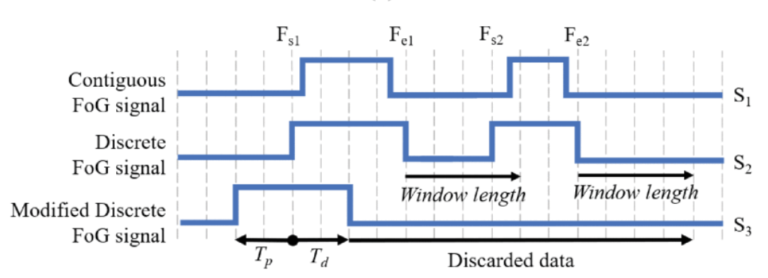The freezing of gait (FoG) is a common type of motor dysfunction in advanced Parkinson’s disease (PD) associated with falls. Over the last decade, a significant amount of studies has been focused on detecting FoG episodes in clinical and home environments. Yet, there remains a paucity of techniques regarding real-time prediction of FoG before its occurrence. In this paper, a new algorithm was employed to define the best combination of sensor position, axis, sampling window length, and features to predict FoG. We hypothesized that gait deterioration before FoG onsets can be discriminated from normal gait using statistical analysis of features from successive windows of data collected from lower-limb accelerometers. We defined a new performance measure, “predictivity”, to compare the number of correctly predicted FoG events among different combinations. We characterized the system performance using data from 10 PD patients, who experienced FoG while performing several walking tasks in a lab environment. The analysis of 120 different combinations revealed that prediction of FoG can be realized by using an individual shank sensor and sample entropy calculated from the horizontal forward axis with window length of 2 s (88.8%, 92.5%, and 89.0% for average predictivity, sensitivity, and specificity, respectively).

